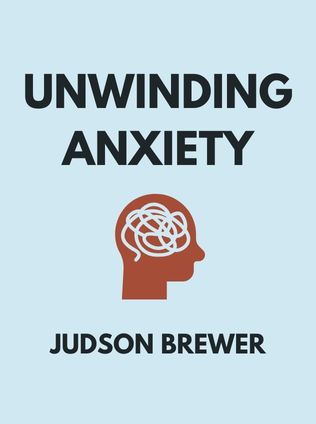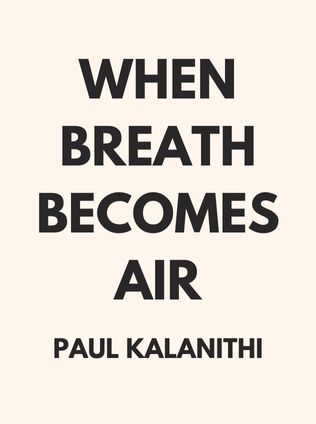
Unwinding Anxiety
By Judson Brewer
Published 01/2020
About the Author
Dr. Judson Brewer is a distinguished psychiatrist, neuroscientist, and pioneer in the field of mindfulness research. He holds both an MD and a PhD, which have enabled him to blend clinical practice with cutting-edge research, particularly in the areas of anxiety and addiction. Throughout his career, Dr. Brewer has focused on how mindfulness can be harnessed to treat various psychological and behavioral conditions. He has published extensively, given numerous talks—including a highly influential TED Talk on habit change—and has co-founded a company that creates app-based treatment programs for anxiety, eating disorders, and smoking cessation, all based on the principles outlined in his book, Unwinding Anxiety.
Dr. Brewer's approach to mental health is characterized by a unique blend of scientific rigor and practical application. His work is informed by his understanding of the brain's mechanisms and how these can be leveraged to foster positive change. By redefining anxiety as a habit, Dr. Brewer offers a fresh perspective that empowers individuals to take control of their mental health using mindfulness as a key tool. His goal is to make these techniques accessible to everyone, enabling people to reduce their reliance on medication and professional intervention by fostering self-awareness and self-compassion.
Main Idea
The core argument of Unwinding Anxiety is that anxiety operates as a habit loop—much like any other habit. This perspective allows us to tackle anxiety in a systematic way by applying the principles of habit change. According to Dr. Brewer, the key to breaking the cycle of anxiety lies in mindfulness—the practice of paying close attention to the present moment without judgment. Through mindfulness, individuals can recognize the triggers and behaviors that perpetuate their anxiety, analyze the rewards (or lack thereof) associated with these behaviors, and replace them with more constructive practices. By following this approach, readers can develop a more mindful and less anxious life.
Table of Contents
- The Habit of Anxiety
- Breaking the Cycle
- Mindfulness and Curiosity Practices
- Troubleshooting
The Habit of Anxiety
Understanding Anxiety as a Habit
Dr. Brewer begins his book by framing anxiety as more than just an emotional response; he describes it as a deeply ingrained habit loop. This loop consists of three core components:
- Trigger: An event, thought, or situation that elicits an anxious response.
- Behavior: The habitual reaction to the trigger, such as worrying, avoidance, or engaging in a coping mechanism.
- Result: The outcome of the behavior, which typically reinforces the anxiety and perpetuates the loop.
Understanding anxiety in this way is crucial because it allows us to see it as a manageable pattern rather than an uncontrollable force. This conceptualization of anxiety as a habit loop forms the foundation of Dr. Brewer’s approach to treatment, as it provides a clear structure for identifying and dismantling the behaviors that sustain anxiety.
“Anxiety is what happens when the prefrontal cortex tries to plan ahead for danger, but in the absence of information, it starts making things up.” — Dr. Judson Brewer
The author delves into the neuroscience behind this habit loop, explaining that the prefrontal cortex (PFC) is designed to help us anticipate and plan for future dangers. However, when the PFC lacks sufficient or accurate information, it can spiral into a cycle of worry, generating “what if” scenarios that fuel anxiety. This overactive anticipation is what turns anxiety into a self-reinforcing habit, making it difficult to escape without intervention.
How Anxiety Becomes a Habit
Dr. Brewer explains that anxiety becomes a habit when the brain’s survival mechanisms—especially the PFC—go into overdrive. This part of the brain is responsible for our ability to plan and make decisions, which is essential for survival. However, when the PFC is overwhelmed or operating with incomplete information, it can lead to excessive worry and anxiety. This worry then becomes habitual, forming a loop that is hard to break.
For instance, consider the example of a performance review at work:
- Trigger: The upcoming performance review triggers fear and anticipation.
- Behavior: The person engages in behaviors such as over-preparing, obsessively checking emails, or avoiding the review process altogether.
- Result: These behaviors reinforce the anxiety, leading to a cycle of worry and avoidance.
This example illustrates how anxiety can become a habit loop. The PFC, in its attempt to plan for potential dangers, creates a cycle of worry that feeds on itself. The more the person worries, the more entrenched the habit becomes, making it difficult to break free from the cycle.
Sign up for FREE and get access to 1,400+ books summaries.
You May Also Like
The Subtle Art of Not Giving a F*ck
A Counterintuitive Approach to Living a Good Life
By Mark MansonHow To Win Friends and Influence People
The All-Time Classic Manual Of People Skills
By Dale CarnegieFreakonomics
A Rogue Economist Explores the Hidden Side of Everything
By Steven D. Levitt and Stephen J. DubnerQuiet: The Power of Introverts
The Power of Introverts in a World That Can't Stop Talking
By Susan Cain



















